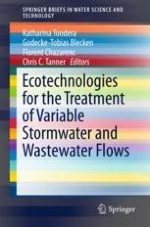This book provides an essential overview of ecotechnologies (also known as green infrastructure or nature-based solutions) which are considered to be relatively resilient to variations in stormwater and wastewater inflow. In particular, it focuses on various types of constructed wetlands, biofilters and ponds. Stormwater flows are inherently variable, due to rainfall events and fluctuations in loading. This variability has significant effects on the performance of treatment systems, but has rarely been specifically addressed in design manuals, performance assessments or modelling. The book’s respective chapters cover the main contaminant categories of interest (nutrients, faecal microbes, metals and emerging contaminants) and their removal processes using ecotechnologies, addressing urban, industrial and agricultural applications. In addition, they review modelling tools with the potential to improve our understanding of flow variability and the ability to simulate and predict responses to it.
